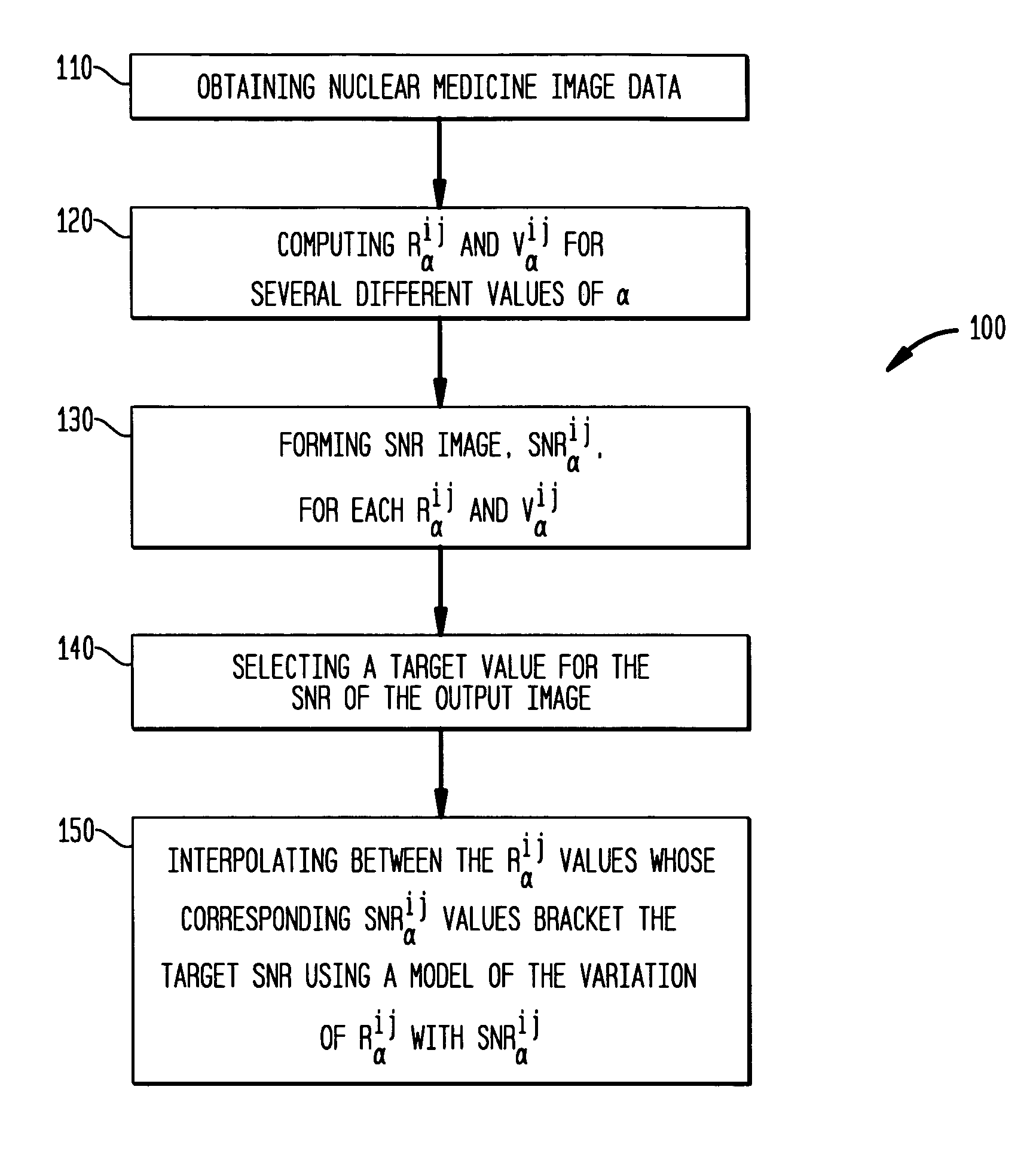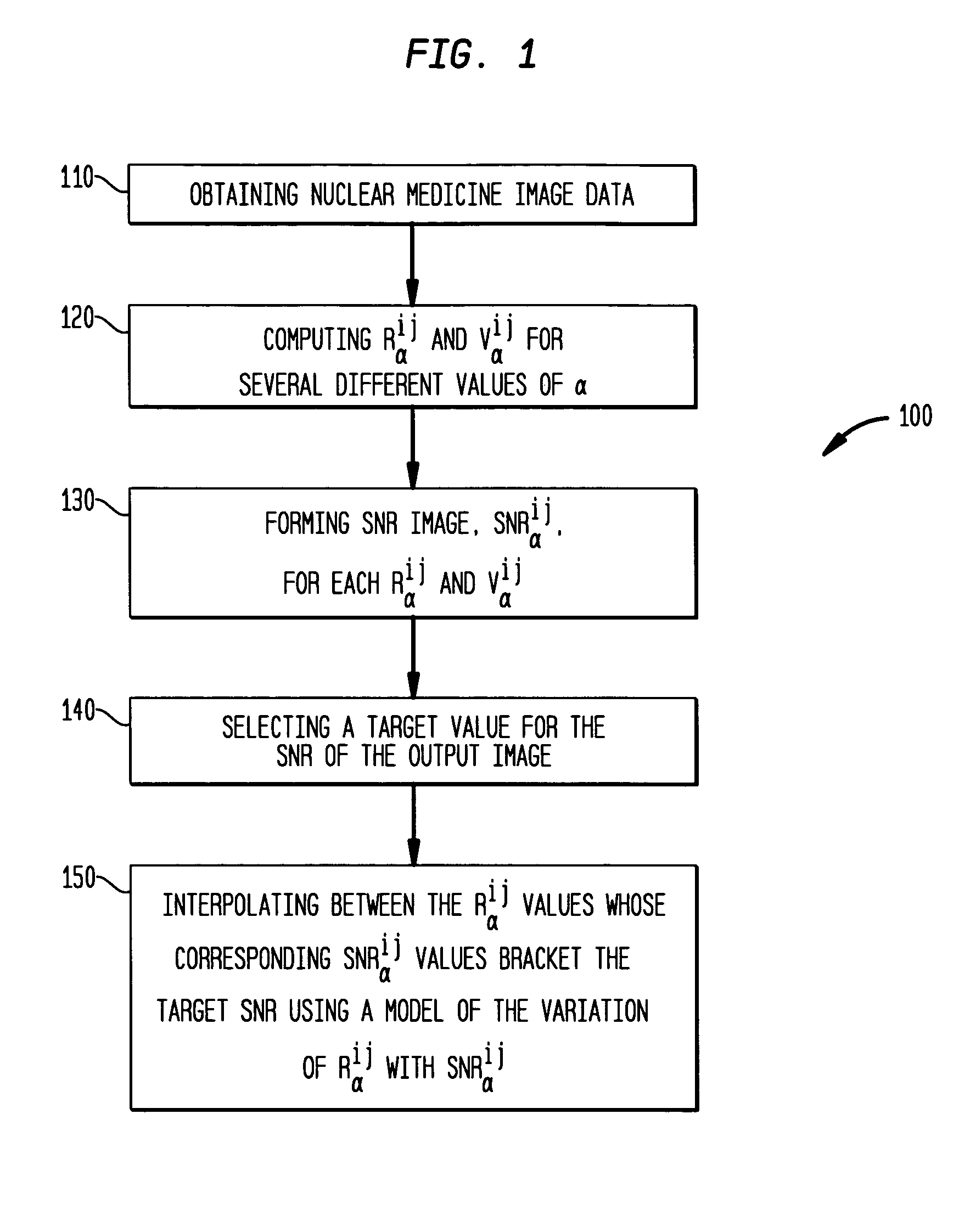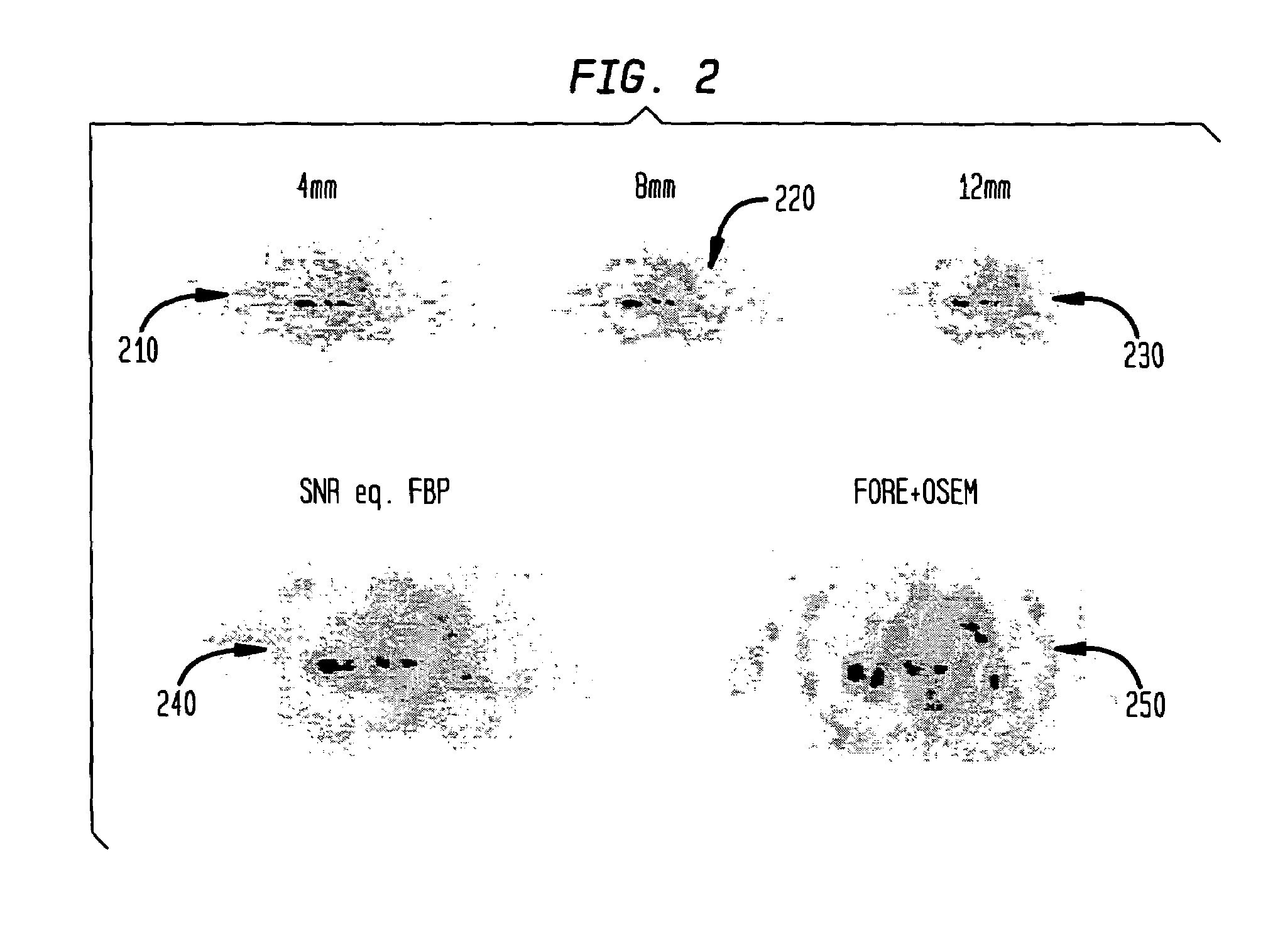Spatially localized noise adaptive smoothing of emission tomography images
a tomography image and noise adaptive technology, applied in image enhancement, image analysis, instruments, etc., can solve the problems of degrading the spatial resolution of the image, unavoidable statistical fluctuations (noise) in pet or spect data, and not by itself correctly solving the reconstruction problem. achieve the effect of well-characterized spatial resolution and noise varian
- Summary
- Abstract
- Description
- Claims
- Application Information
AI Technical Summary
Benefits of technology
Problems solved by technology
Method used
Image
Examples
first embodiment
[0035]Each pixel may be interpolated between the Rαij values whose corresponding SNRαij values bracket the target SNR using a model, which may be linear, of the variation of Rαij with SNRαij. The kernel widths can also be interpolated to give the effective FWHM resolution at each point, αij. The overall smoothness level in the image is controlled by the SNR value, with higher values giving smoother images. In a first embodiment, using the interpolated values, a SNR-equalized image Reqij may be formed.
[0036]It is possible that the target SNR may not be achievable at some point within the image for any reasonable value of αij. To deal with such cases, the permitted values of αij may be constrained to lie within certain limits, and the value giving an SNRαij closest to the desired target value used, thus determining Rαij at that point.
[0037]The technique is not limited to conventional FBP but could be applied to any reconstruction algorithm for which the Rαij and Vαij images can be rea...
second embodiment
[0038]In a second embodiment, an image based on any metric that is a function of Rαij and Vαij may be formed. For example, the selected value of SNR may be treated as a threshold. The image may be smoothed using a default value of α, but for those pixels for which SNRαij was less than the desired minimum value, αij would be increased until the threshold SNR value was met.
[0039]As a second example, αij could be chosen at each point so that SNRαij was increased by a constant factor. Statistical functions other than SNR may also be used.
third embodiment
[0040]In a third embodiment, the statistical information provided by the method may be examined directly. For instance the variance or SNR images can be examined at different resolutions that are computed during the generation of the SNR-FBP image.
[0041]FIGS. 2 and 3 show results from two image slices of a PET patient study. The reconstruction was non-TOF FBP. In each figure, the top row of images 210, 220, 230, and 310, 320, and 330 show standard FBP post-smoothed with Gaussian kernels of different widths, illustrating typical conventional clinical image processing. The images on the bottom left 240 and 340 are the SNR-equalized FBP image, with SNR=5. For comparison, a standard clinical RML iteratively reconstructed image 250, 350 is shown on the lower right.
[0042]FIG. 4 is an example of SNR equalization in linear, confidence-weighted TOF-PET reconstruction. The images in the top row 410 and 420 are conventional TOF reconstruction with post-smoothing by a Gaussian kernel of 8 or 16...
PUM
 Login to View More
Login to View More Abstract
Description
Claims
Application Information
 Login to View More
Login to View More - R&D
- Intellectual Property
- Life Sciences
- Materials
- Tech Scout
- Unparalleled Data Quality
- Higher Quality Content
- 60% Fewer Hallucinations
Browse by: Latest US Patents, China's latest patents, Technical Efficacy Thesaurus, Application Domain, Technology Topic, Popular Technical Reports.
© 2025 PatSnap. All rights reserved.Legal|Privacy policy|Modern Slavery Act Transparency Statement|Sitemap|About US| Contact US: help@patsnap.com



